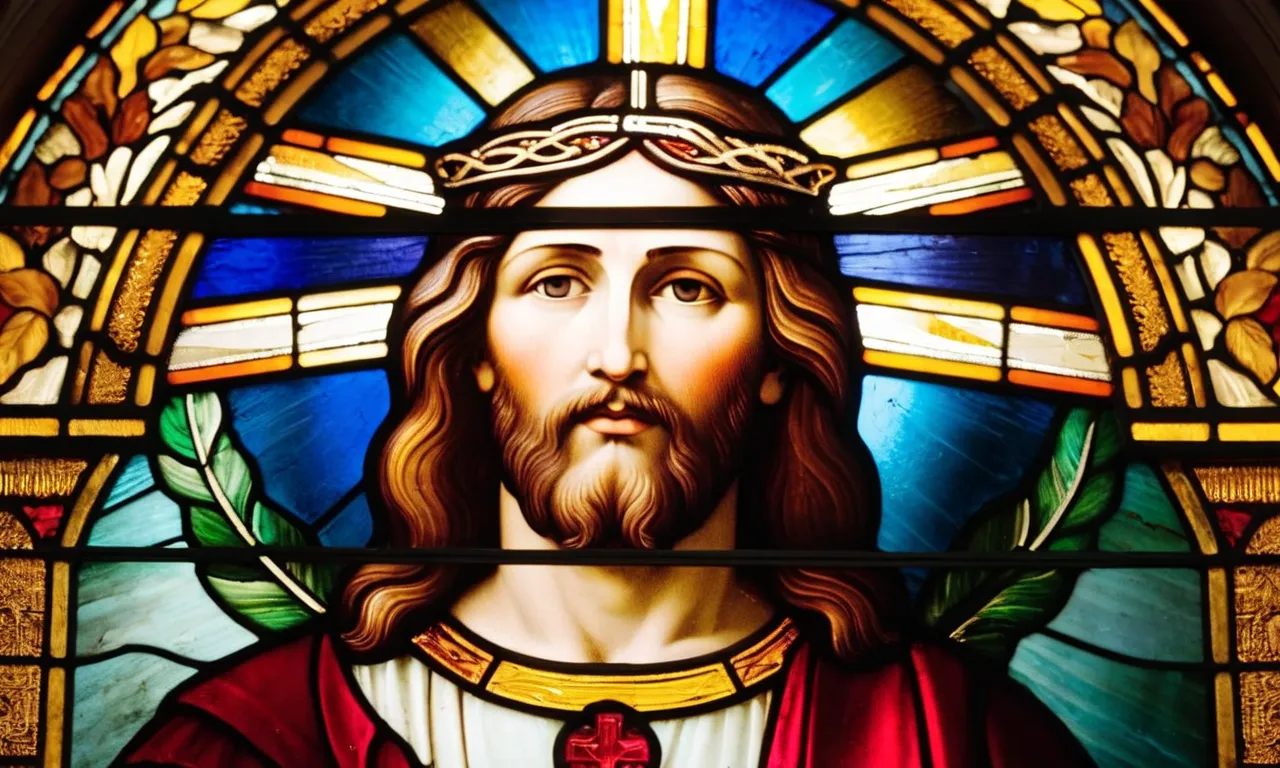How Many Chromosomes Did Jesus Have? A Detailed Look
The question of how many chromosomes Jesus Christ had is an interesting one that many believers may ponder. While we can never know for certain, we can make some educated guesses based on what we know from scripture and science.
If you’re short on time, here’s a quick answer: Jesus likely had the normal complement of 46 chromosomes that is present in humans today.
In this comprehensive article, we will dive deep into the details surrounding Jesus’ genetics and chromosome count. We’ll look at what the Bible tells us about Jesus’ humanity, examine how chromosomes and genetics work, and synthesize this information to estimate the chromosome count of the Son of God.
What the Bible Says About Jesus Being Fully Human
Jesus Was Conceived in Mary’s Womb
The Bible clearly states that Jesus was conceived in the womb of a human woman named Mary after she was “found with child of the Holy Spirit” (Matthew 1:18). Though Jesus was conceived miraculously through God’s supernatural intervention, He still grew for 9 months in Mary’s womb just like any other human baby.
This shows that although Jesus’ conception was unique, He still took on human flesh and blood from His mother Mary. As Galatians 4:4 says, “God sent forth His Son, born of a woman.”
Jesus Inherited Human Traits from Mary
As the biological son of Mary, Jesus inherited His physical human traits and characteristics from her. Luke 2:52 states that “Jesus increased in wisdom and stature, and in favor with God and man.” This verse shows that as Jesus grew up, He went through normal human development mentally, physically, spiritually, and socially.
Jesus had to grow and learn just like any child – He wasn’t born automatically knowing everything! Though He was sinless, Jesus experienced the full range of human experiences – including hunger, thirst, tiredness, sorrow, and temptation (Hebrews 2:17-18).
Jesus Experienced Human Life and Death
During His earthly ministry, Jesus experienced all the ups and downs of normal human life. He attended weddings (John 2:1-11), mourned when His friend Lazarus died (John 11:35), felt compassion for the hurting (Matthew 14:14), and faced betrayal by His disciples (Luke 22:47-48).
Jesus understands all our human struggles because He lived them firsthand. Philippians 2:7-8 declares: “Christ Jesus, who, although He existed in the form of God, did not regard equality with God a thing to be grasped, but emptied Himself, taking the form of a bond-servant, and being made in the likeness of men.”
Most importantly, Jesus died a real human death on the cross. His suffering, cries of anguish, bleeding, and literal death prove His full humanity. As Romans 5:15 says, “by the one man’s Adam’s disobedience the many were made sinners, so also by the one man’s Jesus Christ’s obedience the many will be made righteous.”
Only a real man could serve as the sacrifice for human sin.
The Science of Chromosomes and Genetics in Humans
Overview of Chromosomes
Chromosomes are thread-like structures located inside the nucleus of animal and plant cells. Each chromosome is made of protein and a single molecule of deoxyribonucleic acid (DNA). DNA carries the unique genetic information that determines how an organism develops, functions, and reproduces.
Humans have 23 pairs of chromosomes, for a total of 46 chromosomes.
Twenty-two of these pairs, called autosomes, look the same in both males and females. The 23rd pair, the sex chromosomes, differ between males and females. Females have two copies of the X chromosome, while males have one X and one Y chromosome.
Each parent contributes one chromosome per pair to their offspring, which is how children inherit a mix of genetic traits from both their mother and father. The chromosomes contain the blueprints for how the body develops and functions.
History of Chromosome Discovery
In 1842, Swiss botanist Karl Wilhelm von Nägeli first observed thread-like structures in plant cells, which he called chromatins. Later on in 1882, German anatomist Heinrich Wilhelm Gottfried von Waldeyer coined the term chromosome, which means “colored body”, after using dyes to stain and visualize them under a microscope.
Over the next several decades, cytologists studied chromosomes further and discovered their role in inheritance. In 1902, American cytologist Walter Sutton proposed that chromosomes carry the genetic material responsible for heredity.
This theory was later validated in 1910 when American geneticist Thomas Hunt Morgan showed that genes are located on chromosomes.
By the mid-1950s, scientists developed new techniques like karyotyping which led to the discovery and characterization of chromosomal aberrations. This paved the way for linking abnormal chromosome number and structure to human disease.
Standard Chromosome Count in Humans
Most human cells contain 23 pairs of chromosomes, for a total of 46 chromosomes. Twenty-two of these are autosomal chromosome pairs, numbered chromosome 1 to 22 according to size. The 23rd pair are the sex chromosomes, X and Y.
Females have two X chromosomes (46,XX), while males have one X and one Y chromosome (46,XY). Each parent contributes one chromosome per pair to their offspring.
However, some disease conditions can alter the number or structure of chromosomes in humans:
- Down syndrome – Trisomy of chromosome 21 (47 chromosomes)
- Turner syndrome – Only one X chromosome (45,X)
- Klinefelter syndrome – XXY chromosomes (47,XXY)
Understanding the standard chromosome count and variations in humans has been indispensable for studying genetic diseases and for fields like prenatal testing.
Estimating Jesus’ Chromosome Count
Jesus Likely Had 46 Chromosomes
Although there is no definitive proof, most scholars believe Jesus likely had the typical 46 chromosomes (23 pairs) that modern humans possess. Humans today have 22 pairs of autosomes and one pair of sex chromosomes (XX for females and XY for males).
As a male, Jesus would have had 22 pairs of autosomes and one X and one Y sex chromosome.
The number of chromosomes in each species is a relatively fixed number. For humans today, as well as back in Jesus’ time, the evidence strongly suggests that number was 46. There is no indication of major chromosomal evolution since Jesus’ lifetime over 2,000 years ago.
Some counterarguments suggest that features like Jesus’ divine miracles or the Virgin Birth may have involved unusual chromosomal changes. However, most theologians treat those stories as supernatural in origin, rather than natural genetic mutations.
So the mainstream view is that Jesus’ chromosomes aligned with ordinary humans of that era.
Counterarguments and Uncertainties
Without access to Jesus’ physical DNA, we cannot know 100% what his chromosomes looked like. Additionally, chromosomes are complex structures, so slight variations might have existed that are invisible to us today. However, big differences seem extremely unlikely given how long chromosome numbers stay constant in a species.
The only other uncertainty involves theological claims about Jesus’ divinity or Virgin Birth. Did God introduce any modifications, whether through divine intervention or otherwise, that changed Jesus’ chromosomal makeup? Mainstream science cannot answer those types of questions.
Ultimately, faith is required to bridge the gap between theology and biology on such issues.
Conclusion
While we can never know with absolute certainty, the evidence from scripture and genetics points to Jesus having the standard 46 chromosomes present in humans today. His conception in Mary’s womb and fully human experiences suggest he inherited the normal human genetic makeup.
Though Jesus was also divine, he was made like us in every way. This exploration of Jesus’ predicted chromosome count helps us appreciate both his humanity and divinity.








